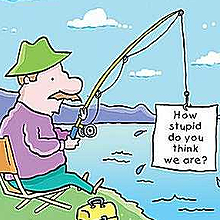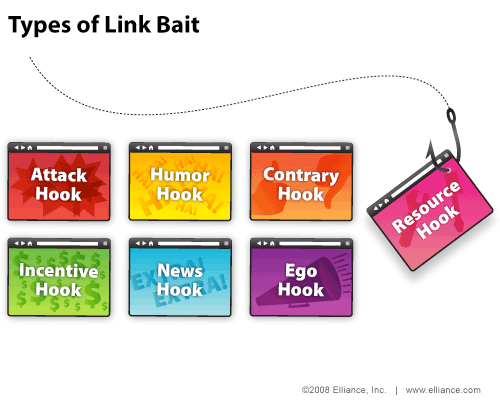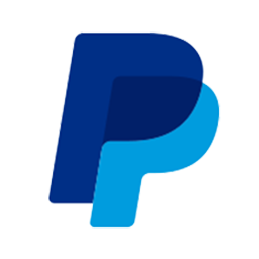 Link baiting is a relatively new term in the SEO industry, coined for the first time by
Link baiting is a relatively new term in the SEO industry, coined for the first time by Types of Link Bait
Link baiting is a technique that does just that: it hooks the readers; it attracts them to your content. If they “bite” they might as well link back to whatever it is you want them to link at; and that’s how you know that your “bait” was successful: the content is the bait, the “back- link” is the catch. There are different strategies to “bait” you can use, from “quality content” to content that has not so much to do with your site’s actual niche (the “empty hook”), from images to video and sound, and from badges and widgets to useful resources and etc – in the end how you attract readers to your site has a lot to do with your creativity and ingenuity. There are seven main types of link bait: attack hook, humor hook, contrary hook, incentive hook, news hook, ego hook and resource hook. For each of these you can use different strategies and techniques: call out a famous blogger, make someone famous, give something away, give an award, etc. A very popular link baiting technique in the blogosphere for example is the “meme” – if the subject “catches” the initiator gets tons of links (all participants are required to link to the original entry – we will discuss this another time).
There are seven main types of link bait: attack hook, humor hook, contrary hook, incentive hook, news hook, ego hook and resource hook. For each of these you can use different strategies and techniques: call out a famous blogger, make someone famous, give something away, give an award, etc. A very popular link baiting technique in the blogosphere for example is the “meme” – if the subject “catches” the initiator gets tons of links (all participants are required to link to the original entry – we will discuss this another time).
How to Bait? The Emotional Marketing Value of a Title
It’s not the content that hooks, it’s the title. You have two seconds to attract the readers’ attention, that’s why writing a “killer headline” is a skill any publisher should master. The title needs to carry an emotional marketing value that is high enough to persuade the audience. Titles with poor EMV don’t hook; and they are often ignored by the reader. If the title is ignored, the content has little chance of being read. My headline today has an emotional marketing value of over 33% (tested with the Emotional Marketing Value Headline Analyzer from the Advanced Marketing Institute). According to the Advanced Marketing Institute, the English language contains 20 % EMV (emotional marketing value) words and most professional copywriters will have 30%-40% EMV words in their titles, while the most gifted will have 50%-75%. The ideal is 100% – very rare unless the headline is less than five words. In comparison, a title like “Link Baiting Tips for Beginners” has an EMV of 0%, while “SEO Link Baiting Advice” scored 25%. Lisa Barone’s “Can Link Baiting Mature? Yes, It Has To” scored 12.5%, Brian Clark’s “The History of Link Bait” scored 40%, and Chris Brogan’s “The Subtle Art of Linkbaiting” scored 20%.How to Bait? The Emotional Impact of a Title
The Advanced Marketing Institute identifies three emotional impact groups: intellectual, empathetic and spiritual. Depending on the audience you want to attract, each group appeals to different aspects of an individual. The headline “SEO Fishing with an Empty Hook” is classified by the Advanced Marketing Institute as “Intellectual.” Intellectual titles are effective to arouse curiosity and attract readers interested in topics that require reasoning and careful evaluation. Obviously my intent was to “hook” the intellectual readers to start a meaningful conversation about link baiting as an SEO technique. In comparison, Lisa Barone’s “Can Link Baiting Mature? Yes, It Has To” has been categorized as “Spiritual.” Spiritual titles carry the strongest potential for influence and are often making the most powerful presentation in the marketplace (note that “spiritual” is not restricted to religion specifically). Chris Brogan’s “The Subtle Art of Linkbaiting” has been classified as empathetic. This is not very common in the SEO industry – empathetic titles are mostly used by people involved in the care giving industry. However, the purpose of an empathetic title is to bring out strong positive reactions in people, so if this is what you aim for, write empathetically. Other aspects of link baiting will be discussed in a future article, but an initial understanding of how link baiting works, and how the title plays such a key role, is sufficient for building a basic strategy. The thing to remember is, great SEO benefits can be derived by publishers if the methods are performed ethically. Like other SEO strategies, link baiting is just part of a much broader strategy for impressing Google and other search engines. While my title was the “hook”, it was definitely not “empty”, as I think anyone can benefit from these helpful tidbits, which have never been covered in a similar link baiting article, anywhere else. Types of Link Bait graphic courtesy Elliance.Frequently Asked Questions about Link Baiting
What is the importance of link baiting in SEO?
Link baiting plays a crucial role in SEO as it helps in generating a large number of high-quality backlinks. When your content is unique, informative, and engaging, other websites are more likely to link back to it. This not only increases your website’s visibility but also boosts its ranking on search engine result pages (SERPs). The more backlinks your website has from reputable sources, the higher its domain authority, which is a key factor in SEO ranking.
How can I create effective link bait?
Creating effective link bait involves producing high-quality, engaging content that provides value to your audience. This could be in the form of informative blog posts, infographics, videos, or any other type of content that your audience finds interesting and useful. The key is to make your content so compelling that other websites want to link back to it.
What are some examples of successful link baiting strategies?
Some successful link baiting strategies include creating unique and valuable content, using eye-catching headlines, incorporating visuals like infographics and videos, and leveraging trending topics. Other strategies include creating comprehensive guides, conducting original research, and creating interactive content like quizzes or calculators.
Can link baiting harm my website’s SEO?
If done correctly, link baiting can significantly improve your website’s SEO. However, if you resort to unethical practices like creating clickbait content or buying backlinks, it can harm your website’s reputation and SEO. It’s important to focus on creating high-quality content that naturally attracts backlinks.
How can I measure the success of my link baiting efforts?
You can measure the success of your link baiting efforts by tracking the number of backlinks your content generates. Tools like Google Analytics, SEMrush, and Ahrefs can help you monitor your backlinks and their impact on your website’s traffic and ranking.
How long does it take to see results from link baiting?
The time it takes to see results from link baiting can vary depending on several factors, including the quality of your content, the competitiveness of your industry, and the reach of your promotion efforts. However, it’s generally a long-term strategy that requires patience and consistency.
Can I use link baiting for any type of content?
Yes, link baiting can be used for any type of content, as long as it’s high-quality, valuable, and engaging. This includes blog posts, articles, videos, infographics, guides, white papers, and more.
What are some common mistakes to avoid in link baiting?
Some common mistakes to avoid in link baiting include creating low-quality or irrelevant content, using misleading headlines, not promoting your content, and focusing solely on quantity rather than quality of backlinks.
How can I promote my link bait content?
You can promote your link bait content through various channels, including social media, email newsletters, guest blogging, and influencer outreach. The key is to reach out to relevant audiences who would find your content valuable and are likely to link back to it.
Can I use link baiting in combination with other SEO strategies?
Absolutely, link baiting is just one aspect of a comprehensive SEO strategy. It should be used in combination with other SEO tactics like keyword optimization, technical SEO, and content marketing to achieve the best results.


